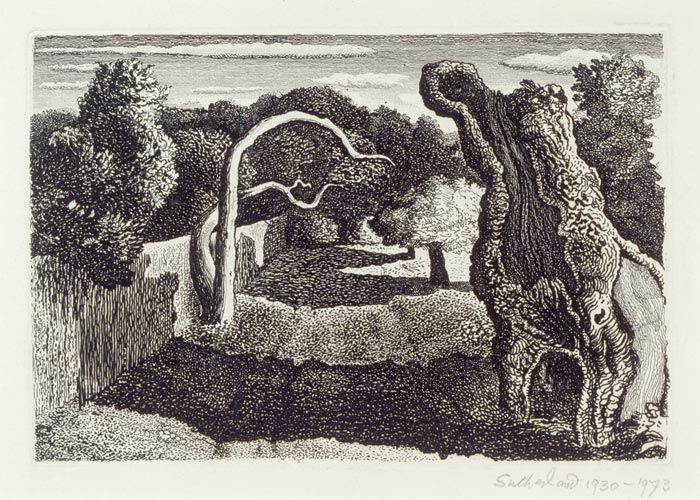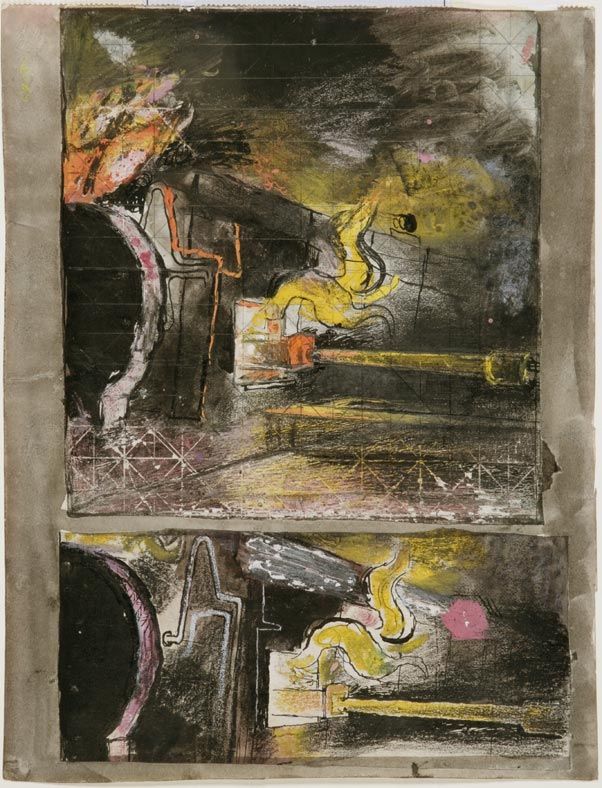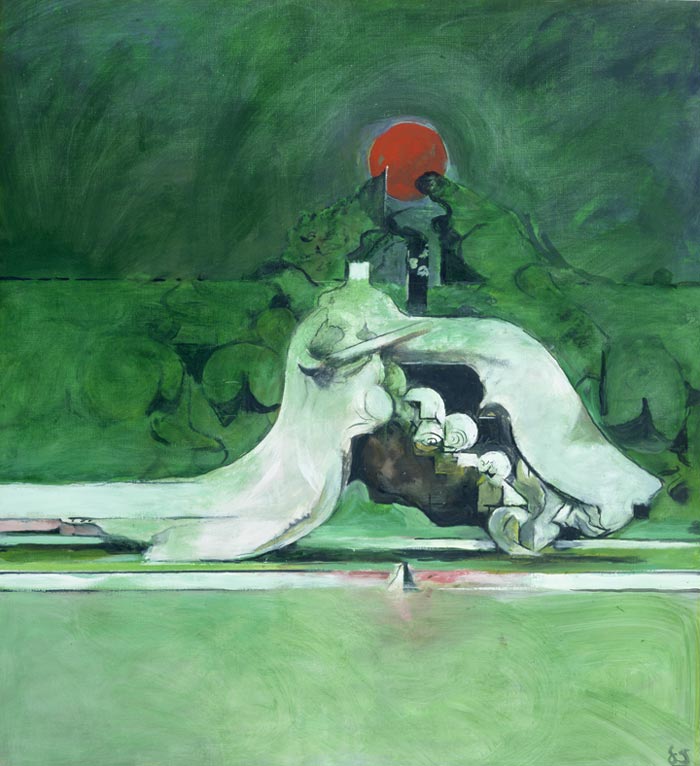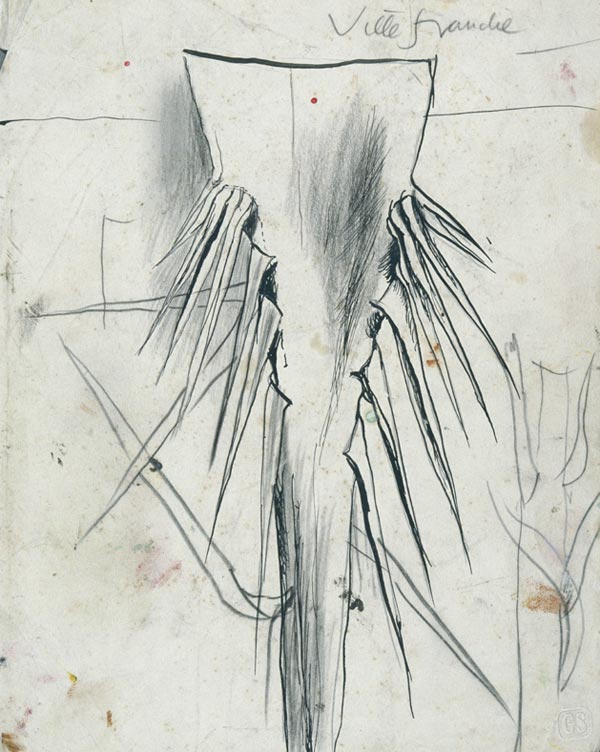Graham Sutherland: Artist in Focus
Graham Sutherland c.1940
© Estate of Graham Sutherland
SUTHERLAND, Graham
Pastoral, 1930 (NWM A 4042)
© Estate of Graham Sutherland
SUTHERLAND, Graham
Welsh Landscape, 1936 (NWM A 4403) © Estate of Graham Sutherland
SUTHERLAND, Graham
Feeding a Furnace, 1942 (NWM A 4628) © Estate of Graham Sutherland
SUTHERLAND, Graham
Untitled (Wavelike Form), 1976 (NMW A 2271) © Estate of Graham Sutherland
SUTHERLAND, Graham
Study of a Palm Frond, 1947 (NWM A 4101)
Graham Sutherland was celebrated as the 'outstanding painter of his generation'. The places in which Sutherland worked had a profound influence on his work: from the rural landscape of Kent, to the hills and valleys of west Wales and the heat and light of the French Riviera.
Sutherland trained as a printmaker at Goldsmiths in the mid 1920s. Many of his early prints show his enthusiasm for the pastoral work of Samuel Palmer.
Trees and woods are enduring motifs in Sutherland's work, from the nostalgic countryside scenes of his earliest prints, through to the blasted and tortured forms of his later images. They often become like creatures, capable of expressing emotion and physical sensation. Gradually Sutherland's vision began to take on a more personal style and note of menace.
Sutherland in Wales
He first visited Pembrokeshire in 1934 and said it was the place where he 'began to learn painting'. He recalled being fascinated by 'twisted gorse on the cliff edge... the flowers and damp hollows... the deep green valleys and the rounded hills and the whole structure, simple and complex'. Sutherland discovered in Pembrokeshire a landscape of 'exultant strangeness' but also felt that he was 'as much part of the earth as my features were part of me'.
Following the outbreak of World War Two, Sutherland was appointed an Official War Artist. He recorded war work at mines, steel works and quarries in Cornwall, South Wales and Derbyshire, and the devastation of bomb-damaged Cardiff, Swansea, London and northern France.
Sutherland visited steel works in Cardiff and Swansea in 1941 and 1942. He imaged the workings of the foundries to be like living creatures. He wrote: 'as the hand feeds the mouth so did the long scoops which plunged into the furnace openings feed them, and the metal containers pouring molten iron into ladles had great encrusted mouths.'
Describing his first experience of the south of France in 1947 Sutherland recalled that: 'To see Provence for the first time is to know
Cézanne properly, and the painting of van Gogh had suddenly for me a new excitement'. He was first encouraged to visit by friends including Francis Bacon.Sutherland quickly took to both the sunny climate and the intriguing appearance of the region's plants and animals. In 1956 he and his wife bought a modernist villa designed by the Irish architect Eileen Gray. Sutherland was to live in this house, on a hillside of the coastal town of Menton for much of the year for the rest of his life.
In France, Sutherland discovered an array of new inspirational forms. Palms, gourds, maize and root-forms were all studied, dissected and reassembled into new arrangements. These increasingly took on the quality of creatures or figures caught in a process of metamorphosis. Palm leaves suggest the sun, heat and foreignness of the south of France. After the hardship and drabness of the war years they must have seemed exotic. However, they signify more than the simple enjoyment of a holiday destination. The razor-sharp frond edges recall the spikiness of Sutherland's earlier thorn studies. They suggest the potential for the co-existence of pleasure and pain.
In 1967 Sutherland returned to west Wales for the first time in over 30 years. Nearly a decade later when he had once again been working regularly in the region, he explained that he had been 'sorely mistaken' in his assumption that he had exhausted the inspiration the place had to offer. Instead he had again soaked himself in the 'curiously charged atmosphere — at once both calm and exciting'.
Sutherland wanted to leave a collection to Wales because he felt 'having gained so much from this country, I should like to give something back'. In 1976 he established the Graham Sutherland Gallery at Picton Castle where the majority of this collection was held before its transfer to Amgueddfa Cymru in 1995.
This article was produced by Rachel Flynn as part of an Arts and Humanities Research Council funded Collaborative Doctoral Award with Amgueddfa Cymru – National Museum Wales and the University of Bristol.
View a list of works by
Graham Sutherland on Art Online





Comments - (2)
Article above was very useful. Am accessing primary sources through y parc gallery in st David s in pembs.
His work never fails to inspire me.